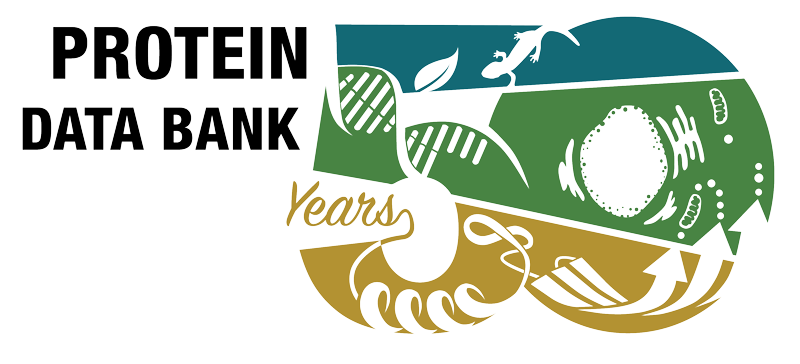Reviews - 2eif mentioned but not cited (1)
- Functional significance of eIF5A and its hypusine modification in eukaryotes. Park MH, Nishimura K, Zanelli CF, Valentini SR. Amino Acids 38 491-500 (2010)
Articles - 2eif mentioned but not cited (5)
Reviews citing this publication (24)
- Initiation of protein synthesis in bacteria. Laursen BS, Sørensen HP, Mortensen KK, Sperling-Petersen HU. Microbiol Mol Biol Rev 69 101-123 (2005)
- Eukaryotic translation initiation factors and regulators. Sonenberg N, Dever TE. Curr Opin Struct Biol 13 56-63 (2003)
- The elongation, termination, and recycling phases of translation in eukaryotes. Dever TE, Green R. Cold Spring Harb Perspect Biol 4 a013706 (2012)
- The post-translational synthesis of a polyamine-derived amino acid, hypusine, in the eukaryotic translation initiation factor 5A (eIF5A). Park MH. J Biochem 139 161-169 (2006)
- The weird and wonderful world of bacterial ribosome regulation. Wilson DN, Nierhaus KH. Crit Rev Biochem Mol Biol 42 187-219 (2007)
- Posttranslational protein modification in Archaea. Eichler J, Adams MW, Adams MW. Microbiol Mol Biol Rev 69 393-425 (2005)
- Eukaryotic cold shock domain proteins: highly versatile regulators of gene expression. Mihailovich M, Militti C, Gabaldón T, Gebauer F. Bioessays 32 109-118 (2010)
- Regulation of senescence by eukaryotic translation initiation factor 5A: implications for plant growth and development. Thompson JE, Hopkins MT, Taylor C, Wang TW. Trends Plant Sci 9 174-179 (2004)
- A tour of structural genomics. Brenner SE. Nat Rev Genet 2 801-809 (2001)
- The hypusine-containing translation factor eIF5A. Dever TE, Gutierrez E, Shin BS. Crit Rev Biochem Mol Biol 49 413-425 (2014)
- Determination of protein function, evolution and interactions by structural genomics. Teichmann SA, Murzin AG, Chothia C. Curr Opin Struct Biol 11 354-363 (2001)
- Hypusine, a polyamine-derived amino acid critical for eukaryotic translation. Park MH, Wolff EC. J Biol Chem 293 18710-18718 (2018)
- Translation Elongation and Recoding in Eukaryotes. Dever TE, Dinman JD, Green R. Cold Spring Harb Perspect Biol 10 a032649 (2018)
- Evolution of translational initiation: new insights from the archaea. Londei P. FEMS Microbiol Rev 29 185-200 (2005)
- Is there a role for eIF5A in translation? Zanelli CF, Valentini SR. Amino Acids 33 351-358 (2007)
- Stall no more at polyproline stretches with the translation elongation factors EF-P and IF-5A. Lassak J, Wilson DN, Jung K. Mol Microbiol 99 219-235 (2016)
- Evolutionary conservation of reactions in translation. Ganoza MC, Kiel MC, Aoki H. Microbiol Mol Biol Rev 66 460-85, table of contents (2002)
- eIF5A and EF-P: two unique translation factors are now traveling the same road. Rossi D, Kuroshu R, Zanelli CF, Valentini SR. Wiley Interdiscip Rev RNA 5 209-222 (2014)
- Methodologies for target selection in structural genomics. Linial M, Yona G. Prog Biophys Mol Biol 73 297-320 (2000)
- An integrated approach to structural genomics. Heinemann U, Frevert J, Hofmann K, Illing G, Maurer C, Oschkinat H, Saenger W. Prog Biophys Mol Biol 73 347-362 (2000)
- Structural genomics: an overview. Blundell TL, Mizuguchi K. Prog Biophys Mol Biol 73 289-295 (2000)
- Archaeal genomics. Gaasterland T. Curr Opin Microbiol 2 542-547 (1999)
- Functions and Regulation of Translation Elongation Factors. Xu B, Liu L, Song G. Front Mol Biosci 8 816398 (2021)
- Hypusination, a Metabolic Posttranslational Modification of eIF5A in Plants during Development and Environmental Stress Responses. Pálfi P, Bakacsy L, Kovács H, Szepesi Á. Plants (Basel) 10 1261 (2021)



 PMID:
PMID: 